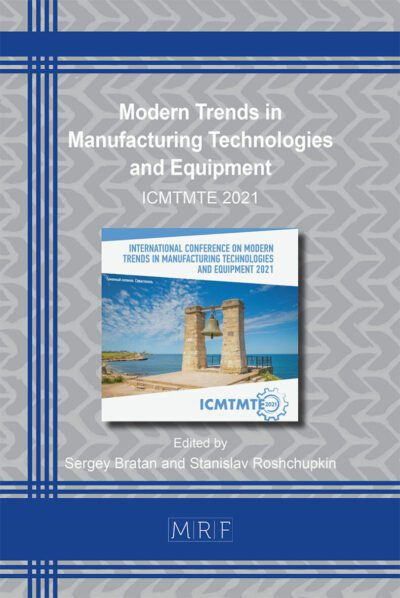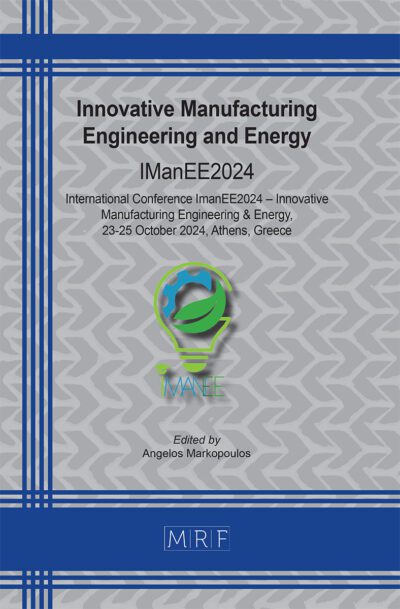Effect of Si, Cu, Mn additions on the extrudability of recycled Al-Zn-Mg alloys
Baptiste Faivre, Jun Ma, Kai Zhang, Krzysztof Zaborowski, Xiang Ma
Abstract. With the growing demand for lightweight materials and the increasing focus on low-carbon footprint policies, aluminum recycling has become a critical concern in recent years. Despite advancements in sorting techniques, the recycling process can still result in modifications and variations in alloy composition due to the introduction of impurities. This study investigates the extrudability of the Al-Zn-Mg alloy (7108 alloy) with the addition of Si, Cu, and Mn elements. To assess extrudability, a 9 mm in diameter rod profile with two 1×1 mm² fins on each side was meticulously designed. Extrusion trials at varying speeds were conducted using a laboratory extrusion press. The results indicate that the addition of 0.22% Si reduces the maximum allowable extrusion speed before tearing occurs but also lowers the required press load by forming coarse Mg2Si particles. Adding Cu up to 0.17% has a minor effect on extrudability and extrusion load. In contrast, the addition of Mn significantly enhances extrudability by capturing Si into AlMnSi particles, which exhibit stable thermomechanical properties. These findings highlight the potential for incorporating higher impurity levels in aluminum alloys without compromising extrudability, thereby supporting the development of advanced extrusion products using recycled alloys.
Keywords
Recycled Aluminum, Al-Zn-Mg Alloy, Extrusion, Extrudability, Defect
Published online 5/7/2025, 7 pages
Copyright © 2025 by the author(s)
Published under license by Materials Research Forum LLC., Millersville PA, USA
Citation: Baptiste Faivre, Jun Ma, Kai Zhang, Krzysztof Zaborowski, Xiang Ma, Effect of Si, Cu, Mn additions on the extrudability of recycled Al-Zn-Mg alloys, Materials Research Proceedings, Vol. 54, pp 792-798, 2025
DOI: https://doi.org/10.21741/9781644903599-85
The article was published as article 85 of the book Material Forming
![]() Content from this work may be used under the terms of the Creative Commons Attribution 3.0 license. Any further distribution of this work must maintain attribution to the author(s) and the title of the work, journal citation and DOI.
Content from this work may be used under the terms of the Creative Commons Attribution 3.0 license. Any further distribution of this work must maintain attribution to the author(s) and the title of the work, journal citation and DOI.
References
[1] M. E. Schlesinger, “Aluminum Recycling,” 2006. https://doi.org/10.1201/9781420006247.
[2] E. Aluminium, “VISION 2050 | A vision for Strategic, low carbon and competitive aluminium,” 2018.
[3] J. Søreide, “Not all aluminium is equal: We need to increase the use of post-consumer scrap to accelerate emission cuts,” 2021.
[4] S. Bell, B. R. Davis, A. Javaid, and E. Essadiqi, “Final Report on Scrap Management, Sorting and Classification of Aluminum,” 2003. https://doi.org/10.13140/RG.2.2.30171.98089
[5] G. Gaustad, E. Olivetti, and R. Kirchain, “Improving aluminum recycling: A survey of sorting and impurity removal technologies,” Resources, Conservation and Recycling, vol. 58, pp. 79-87, 2012. https://doi.org/10.1016/j.resconrec.2011.10.010
[6] T. Sheppard, “Extrusion of Aluminium Alloys,” 1999. https://doi.org/10.1007/978-1-4757-3001-2
[7] S. Ngernbamrung, Y. Suzuki, N. Takatsuji, and K. Dohda, “Investigation of surface cracking of hot-extruded AA7075 billet,” Procedia Manufacturing, vol. 15, pp. 217-224, 2018. https://doi.org/10.1016/j.promfg.2018.07.212
[8] Y. Birol, “Homogenization of EN AW 6005A Alloy for Improved Extrudability,” Metallurgical and Materials Transactions A, vol. 44, no. 1, pp. 504-511, 2012. https://doi.org/10.1007/s11661-012-1379-y
[9] A. Woźnicki, D. Leśniak, G. Włoch, B. Leszczyńska-Madej, and A. Wojtyna, “The Effect Of Homogenization Conditions On The Structure And Properties Of 6082 Alloy Billets,” Archives of Metallurgy and Materials, vol. 60, no. 3, pp. 1763-1772, 2015. https://doi.org/10.1515/amm-2015-0303
[10] M. Negozio, A. Segatori, R. Pelaccia, B. Reggiani, and L. Donati, “Experimental investigation and numerical prediction of the peripheral coarse grain (PCG) evolution during the extrusion of different AA6082 aluminum alloy profiles,” Materials Characterization, vol. 209, 2024. https://doi.org/10.1016/j.matchar.2024.113723
[11] A. R. Eivani, J. Zhou, and J. Duszczyk, “Mechanism of the formation of peripheral coarse grain structure in hot extrusion of Al-4.5Zn-1Mg,” Philosophical Magazine, vol. 96, no. 12, pp. 1188-1196, 2016. https://doi.org/10.1080/14786435.2016.1157637
[12] T. Funazuka, K. Dohda, N. Takatsuji, K. Takano, and N. Sukunthakan, “Effect of Temperature on Surface Cracking Defects in AA7075 Hot Extrusion,” Key Engineering Materials, vol. 926, pp. 409-415, 2022. https://doi.org/10.4028/p-6bfd8v
[13] K. H. Yoshikazu Kato, Masashi Sakaguchi, Kenji Higashi, “Effect of Alloy Elements on Microstructure and Mechanical Properties in Al-Mg-Si alloys.pdf>,” presented at the 13th International Conference on Aluminum Alloys (ICAA13), 2012.
[14] X. Zhang et al., “Effects of Cu Addition on Age Hardening Behavior and Mechanical Properties of High-Strength Al-1.2Mg-1.2Si Alloy,” Materials (Basel), vol. 16, no. 8, Apr 15 2023. https://doi.org/10.3390/ma16083126
[15] Y. Wu, H. Wang, and C. Ban, “Effect of Fe Content on the Microstructure and Properties of Hot-extruded 6061 Aluminum Alloy,” Journal of Physics: Conference Series, vol. 1986, no. 1, 2021. https://doi.org/10.1088/1742-6596/1986/1/012011
[16] Z. Peng and T. Sheppard, “Study of surface cracking during extrusion of aluminium alloy AA 2014,” Materials Science and Technology, vol. 20, no. 9, pp. 1179-1191, 2013. https://doi.org/10.1179/026708304225022016
[17] P. Zhao, Z. Chen, and C. Dong, “Investigation and prediction of tearing failure during extrusion based on a modified shear damage model,” Mechanics of Materials, vol. 112, pp. 28-39, 2017. https://doi.org/10.1016/j.mechmat.2017.05.008
[18] F. Zupanic et al., “Dispersoids in Al-Mg-Si Alloy AA 6086 Modified by Sc and Y,” Materials (Basel), vol. 16, no. 8, Apr 7 2023. https://doi.org/10.3390/ma16082949
[19] Y. Dai, L. Yan, and J. Hao, “Review on Micro-Alloying and Preparation Method of 7xxx Series Aluminum Alloys: Progresses and Prospects,” Materials (Basel), vol. 15, no. 3, Feb 6 2022. https://doi.org/10.3390/ma15031216
[20] A. Arnoldt, J. A. Österreicher, A. Schiffl, and H. W. Höppel, “Optimizing the Zn and Mg contents of Al–Zn–Mg wrought alloys for high strength and industrial-scale extrudability,” Journal of Materials Research and Technology, vol. 32, pp. 2972-2982, 2024. https://doi.org/10.1016/j.jmrt.2024.08.014













